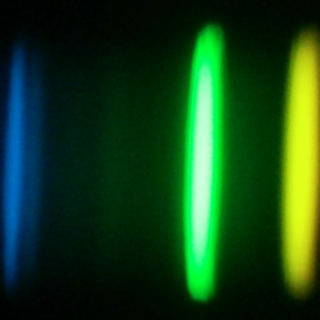Bibcode
Holtzman, J. A.; Shetrone, M.; Johnson, J. A.; Allende Prieto, C.; Anders, Friedrich; Andrews, Brett; Beers, Timothy C.; Bizyaev, Dmitry; Blanton, Michael R.; Bovy, Jo; Carrera, R.; Chojnowski, S. Drew; Cunha, Katia; Eisenstein, Daniel J.; Feuillet, Diane; Frinchaboy, Peter M.; Galbraith-Frew, Jessica; García Pérez, A. E.; García-Hernández, D. A.; Hasselquist, Sten; Hayden, Michael R.; Hearty, Fred R.; Ivans, Inese; Majewski, Steven R.; Martell, Sarah; Meszaros, Szabolcs; Muna, Demitri; Nidever, David; Nguyen, Duy Cuong; O’Connell, Robert W.; Pan, Kaike; Pinsonneault, Marc; Robin, Annie C.; Schiavon, Ricardo P.; Shane, Neville; Sobeck, Jennifer; Smith, Verne V.; Troup, Nicholas; Weinberg, David H.; Wilson, John C.; Wood-Vasey, W. M.; Zamora, O.; Zasowski, Gail
Bibliographical reference
The Astronomical Journal, Volume 150, Issue 5, article id. 148, 27 pp. (2015).
Advertised on:
11
2015
Citations
407
Refereed citations
386
Description
The SDSS-III/Apache Point Observatory Galactic Evolution Experiment
(APOGEE) survey operated from 2011–2014 using the APOGEE
spectrograph, which collects high-resolution (R ∼ 22,500), near-IR
(1.51–1.70 μm) spectra with a multiplexing (300 fiber-fed
objects) capability. We describe the survey data products that are
publicly available, which include catalogs with radial velocity, stellar
parameters, and 15 elemental abundances for over 150,000 stars, as well
as the more than 500,000 spectra from which these quantities are
derived. Calibration relations for the stellar parameters
({T}{eff}, {log} g, [M/H], [α/M]) and abundances (C, N,
O, Na, Mg, Al, Si, S, K, Ca, Ti, V, Mn, Fe, Ni) are presented and
discussed. The internal scatter of the abundances within clusters
indicates that abundance precision is generally between 0.05 and 0.09
dex across a broad temperature range; it is smaller for some elemental
abundances within more limited ranges and at high signal-to-noise ratio.
We assess the accuracy of the abundances using comparison of mean
cluster metallicities with literature values, APOGEE observations of the
solar spectrum and of Arcturus, comparison of individual star abundances
with other measurements, and consideration of the locus of derived
parameters and abundances of the entire sample, and find that it is
challenging to determine the absolute abundance scale; external accuracy
may be good to 0.1–0.2 dex. Uncertainties may be larger at cooler
temperatures ({T}{eff} \lt 4000 {{K}}). Access to the
public data release and data products is described, and some guidance
for using the data products is provided.
Related projects

Nucleosynthesis and molecular processes in the late stages of Stellar Evolution
Low- to intermediate-mass (M < 8 solar masses, Ms) stars represent the majority of stars in the Cosmos. They finish their lives on the Asymptotic Giant Branch (AGB) - just before they form planetary nebulae (PNe) - where they experience complex nucleosynthetic and molecular processes. AGB stars are important contributors to the enrichment of the
Domingo Aníbal
García Hernández

Chemical Abundances in Stars
Stellar spectroscopy allows us to determine the properties and chemical compositions of stars. From this information for stars of different ages in the Milky Way, it is possible to reconstruct the chemical evolution of the Galaxy, as well as the origin of the elements heavier than boron, created mainly in stellar interiors. It is also possible to
Carlos
Allende Prieto